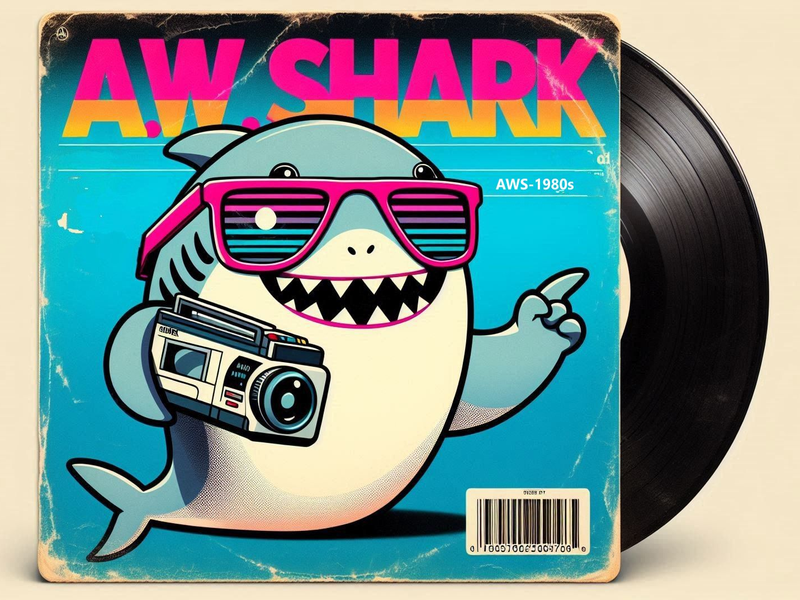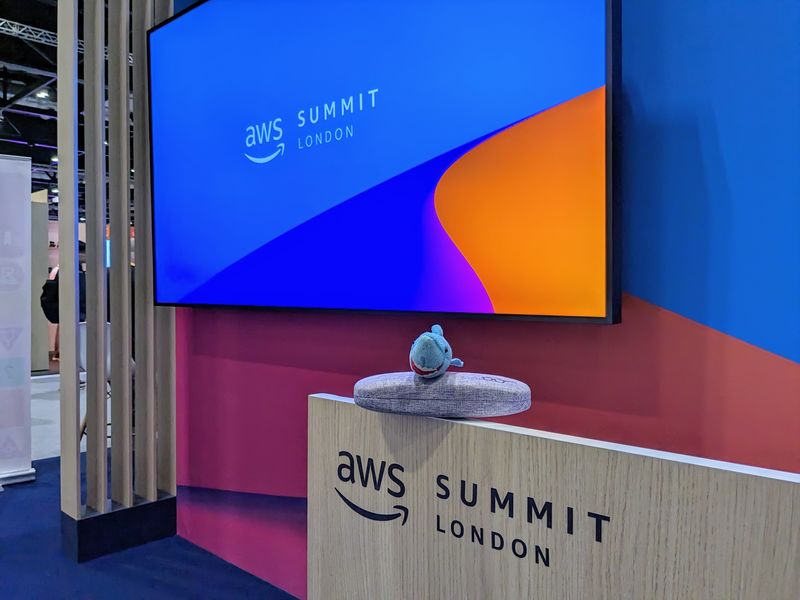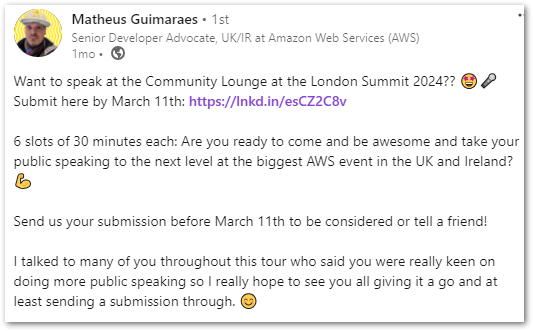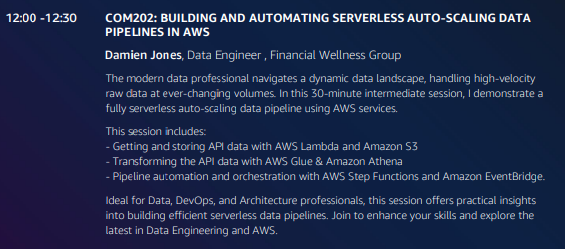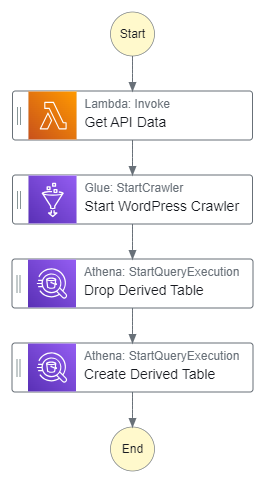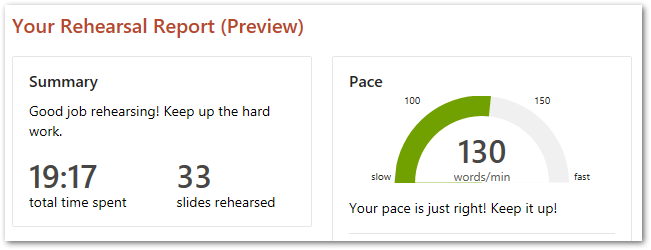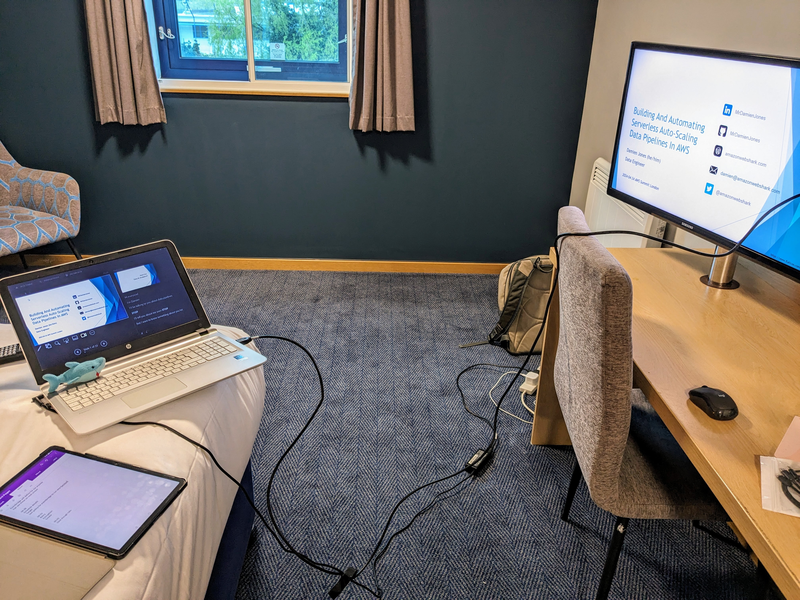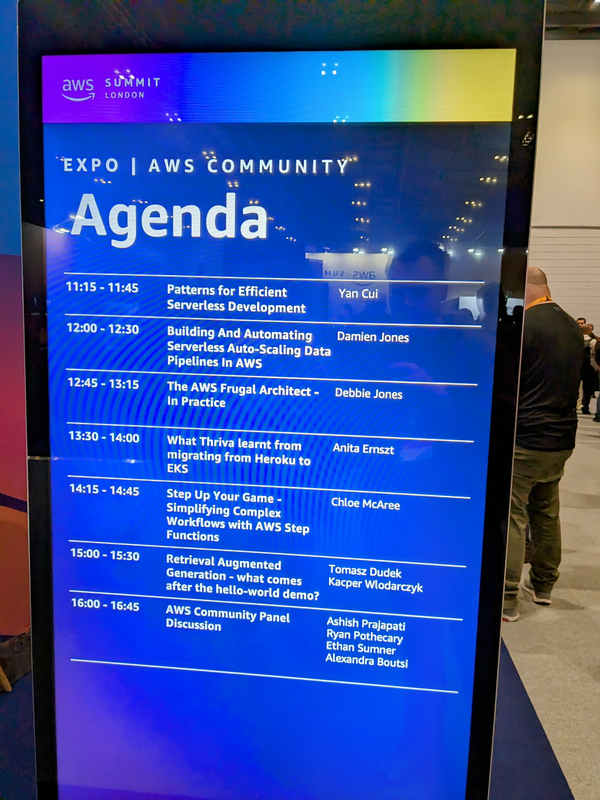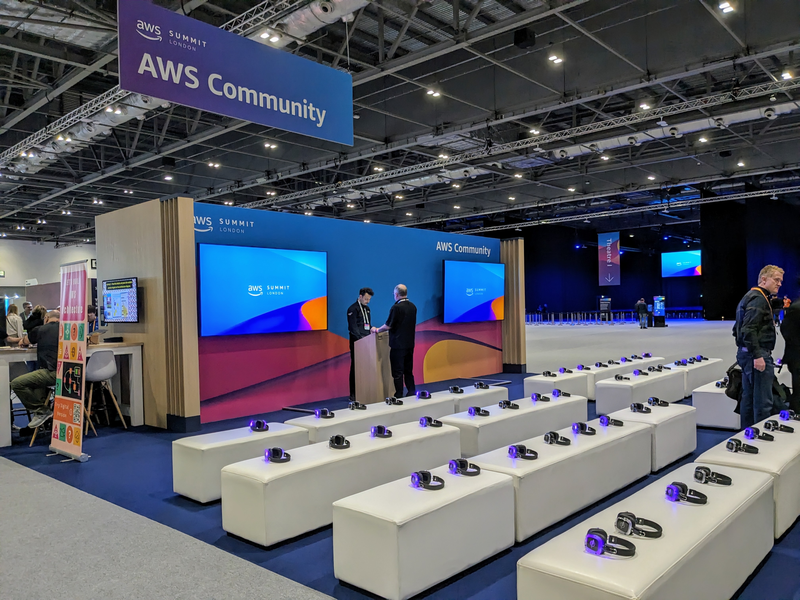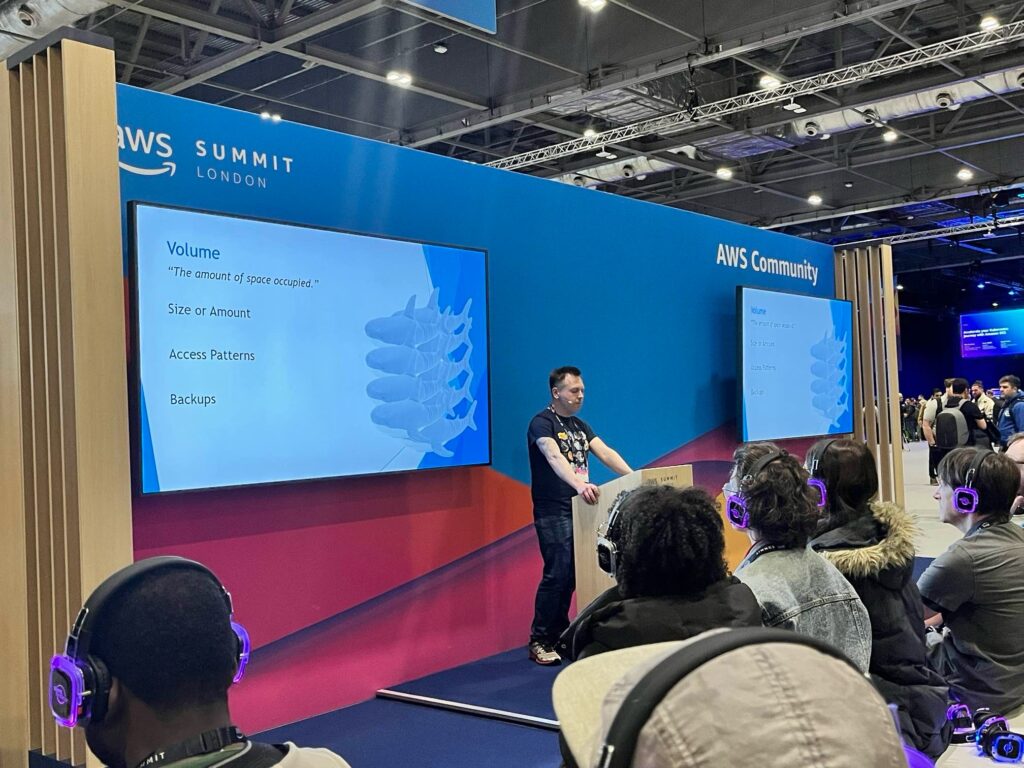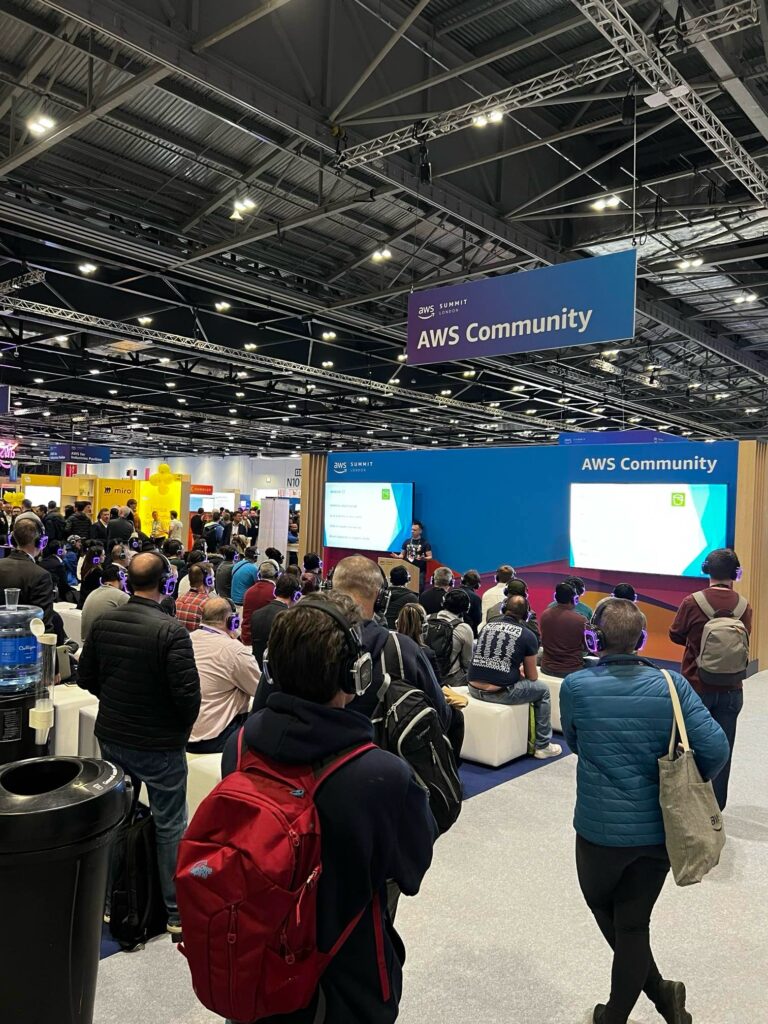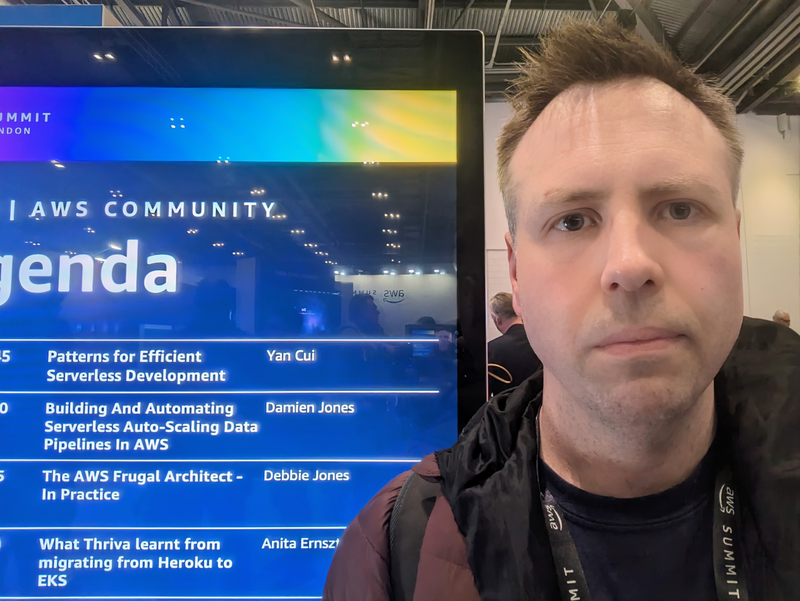In this post, I debut both the amazonwebshark YouTube channel and my first demonstration video and shark shorts.
Table of Contents
Introduction
So, this is amazonwebshark’s fiftieth post! It’s also my first post as a consultant! I joined the Steamhaus team this month and am looking forward to what the future brings!
In my last YearCompass review, I committed to building my personal brand. So far 2024 has seen this shark presenting at AWS Summit London and AWS User Group Liverpool, and making video content seems like the logical next step.
Before this, the amazonwebshark YouTube channel held playlists for videos I’ve referenced in previous posts. And as of July 2024 I’ve joined the video content creator ranks with some humble contributions of my very own!
So what’s this post about? Firstly, I’ll examine my motivation for making video content. Then I’ll link my current uploads, and finally I’ll set initial expectations for the channel.
Why?
So why am I doing this? This section explains my motivation for recording videos and what I hope to achieve.
Practice & Improve Speaking
Generally, doing something more often reveals improvements, efficiencies and optimisations. And I want to improve my speaking. So I need to do more of it!
I got some great advice from Laurie Kirk a while ago on this topic. She has a habit of filming herself daily and reviewing the footage for improvements. By her own admission, this has improved her confidence and quality.
Besides this, speaking practice draws parallels with training runs. Becoming an optimal runner involves various types of training. Want to build endurance? Run slower over distance. Want to improve speed? Focus on faster, shorter bursts.
And it’s the same with speaking. Want to practise lightning talks? Make short videos. Want to improve sessions? Film a demo. My work so far made me more confident at AWS UG Liverpool earlier this month, so I hope to see more improvements in the coming months by practising different types of speaking.
Audience Diversification
In addition to improving my current abilities, I want to upskill my ability to communicate with people outside my field of expertise.
It’s well known that technical people love speaking with technical people. Getting into the weeds about operating systems, functions, architectures and paradigms regularly see hours fly by at meetups.
This is, however, inherently limiting to those less knowledgeable in those areas. I was originally going to label this as ‘non-tech’, but on reflection this extends in all directions. For example, I won’t understand an architectural discussion that turns to von Neumann architectures. I then have equal potential to confuse if I start talking about Lakehouse architectures. This can even happen with people sharing a speciality: I had no idea what instantiate meant when I first heard it from another Data Engineer.
Amongst the best sessions and videos I’ve seen are ones where topics are made accessible and inclusive to a diverse audience with ranging skills and experience. Some viewers will have years of experience in the field and are looking for the latest insights. Others will be hearing about the topic for the very first time. Appealing to both ends of the spectrum is the ideal scenario.
This is the skill level I’m aiming towards. Creating sessions and videos that appeal to a diverse range of viewers will make me a more inclusive and effective communicator. And it’s not just about audience diversification…
Content Diversification
Next, producing videos will let me make different kinds of content.
Applying the Diátaxis framework, my blog posts lean more towards Tutorial than the others. This is intentional, as I’ve always preferred practice over theory and like sharing cool stuff that enables people.
That’s not to say I don’t get curious about the other Diátaxis ‘needs’ of How-To Guide, Explanation and Reference. While past exploration of these with text hasn’t worked out, videos offer new opportunities here such as:
- Trying out new AWS services and features.
- Running through concepts and architectures.
- Exploring unfamiliar and less common settings and parameters.
In short, content ideas that lend themselves better to video than text. And speaking of ideas…
Failing Fast
Videos may save a post idea that has promise but isn’t working out.
I am never stuck for blog post ideas. There’s always something to write about – from services and architectures to current events. I probably have more potential post topics than I can ever write.
This isn’t to say that every post I start is completed though. Some ideas begin well but start to unravel. They might meander, lack cohesion or simply become uninteresting. And while I’m getting better at seeing the early signs of this, occasionally some still slip through.
I’m a big believer in avoiding the sunken cost fallacy. So in those situations, I admit defeat and defer to the Cult of Done Manifesto’s fifth principle:
“If you wait more than a week to get an idea done, abandon it.”
The Cult of Done Manifesto – Bre Pettis
There are several interpretations of this principle. NoBoilerplate‘s advice is that:
“Ideas in your brain are like a pipe full of random stuff. Some of it will be good; some not so good. If you’re not feeling it, don’t try to make a bad idea better – try the next idea.”
The Cult of Done: How To Get *Started* – No Boilerplate
I agree. But it’s still disheartening sometimes to delete something that still feels like it has legs – just not for the body you’re trying to stitch them to. More recently, I found Jason Fladlien‘s interpretation which has a different take:
“The longer you go not getting something done the more baggage you create around getting it done. “Abandoning” an idea simply means throwing this version of it in the trash. You can start it fresh later.”
The Cult of Done – The Drive-Contentment Connection
This applies very well to situations where an idea loses traction as a blog post but is still worth pursuing. Instead of deleting everything, post material could be repurposed into video material.
Additionally, I’m likely to have session abstracts that either don’t work out or aren’t accepted. If I consider the idea to be sound, videos are ideal solutions to these situations too.
Chasing Internet Stardom
Yeah ok not really.
Current Uploads
So what have I produced so far on the video and shark short front?
Firstly, I’ve filmed a pair of data-themed YouTube shorts. The first examines one of the functions of an AWS Glue Crawler:
The other considers one of the differences between Parquet files and CSV files:
Future shorts will be uploaded to YouTube, Instagram and TikTok. I’ll see how this goes over the coming months.
I’ve also uploaded an extended demo for my Building And Automating Serverless Auto-Scaling Data Pipelines In AWS session:
The demo I use in this session begins with some existing AWS resources. This keeps me within the session’s time limit, but at the cost of an incomplete picture of what the Step Function workflow is doing. This extended version starts with a blank workflow and shows the Glue and Athena setup behind the scenes.
I’m not holding these up as works of art! They are rough around the edges, and I’m sure I’ll improve over time. In the meantime, a different Cult of Done Manifesto principle applies:
“Pretending you know what you’re doing is almost the same as knowing what you are doing, so just accept that you know what you’re doing even if you don’t and do it.”
The Cult of Done Manifesto – Bre Pettis
Expectations
So what are my expectations for the video and shark shorts?
This is all very much early days. There are no grand plans or ambitions, and I don’t have an upload schedule planned. I already have lots going on personally and professionally and don’t want to burn myself out. Much like this blog, it’s something for me to experiment and upskill with.
That said, I recently bought some streaming gear and a posh microphone in the Prime Day sales. So let’s see where this goes!
Summary
In this post, I debuted both the amazonwebshark YouTube channel and my first demonstration video and shark shorts.
As I said, there’s no grand vision for any of this and I’m totally winging it. It’s a bit of fun and I’m interested to see where it goes. In the meantime, the button below has links for contact, socials, projects and sessions:
Thanks for reading ~~^~~
